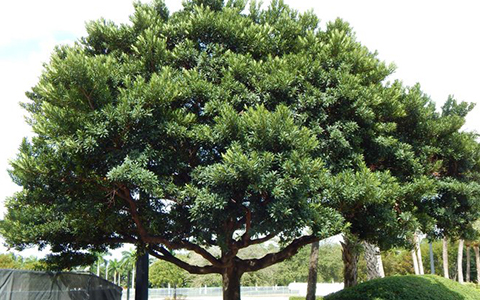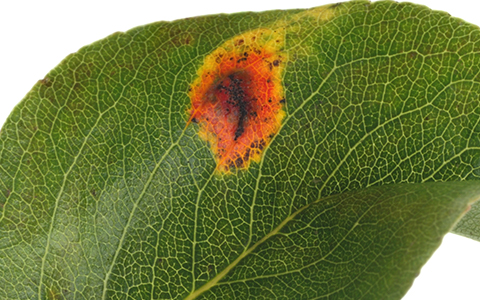Notice: Undefined variable: page in /home/vrxdg1855sn3/public_html/wp-content/themes/72tree/content.php on line 15
Notice: Trying to get property 'ID' of non-object in /home/vrxdg1855sn3/public_html/wp-content/themes/72tree/content.php on line 15
Japanese Blueberry Tree Problems and Solutions

Protect your Japanese blueberry tree from fungus, decline, and death. Knowing some of the more common problems your Elaeocarpus decipiens can go through will help you avoid losing your tree to poor health conditions.
72tree.com gathered the following information to help you identify and quickly treat some of the more frequent problems occurring with the Japanese blueberry species.
What is a Japanese Blueberry Tree?
The Japanese blueberry tree (Elaeocarpus decipiens) is a remarkably beautiful, broad-leaved evergreen tree originating from East Asia. Its compact form, lush appearance, and elegant branching pattern make this tree species a sought-after lawn, garden, or street tree with year-round appeal.
Japanese Blueberry trees grow up to 40 feet with a spread of about 30 feet. This allows tree owners to prune and shape the tree however they want. The tree is a fascinating topiary canvas, allowing growers to be creative and build their yards and gardens the way they like.
Note: This evergreen can be grown as a large shrub or tree.
Japanese Blueberry Tree Problems
When it comes to tree problems, Japanese blueberry trees are exceptionally resilient and disease-resistant. The tree’s troubles are minor, but they still require attention to keep them under control. If you’ve spotted any of the problems listed below, quickly take action, as they can all be solved with the appropriate care and attention.
1. Tree Tops Dying Back
There may be several reasons for this damage. Borers can cause mechanical damage to the trunk shutting off the water and nutrients going to the top. Diseases developing beneath the bark can do the same thing. Because the Japanese blueberry is relatively thin-barked, sunburn or sunscald from intense sunlight can kill the trunk in that location and cause this dieback. Human activities around the tree can cause similar bark damage as well.
Boring Insect Solution: For boring insects, the best treatment is prevention. There is little you can do to save the tree once they’ve infested it. You can protect un-infested trees from borer infestation and damage with an insecticide soil drench once a year and an annual checkup from an arborist or trusted tree service.
Sunburn or Sunscald Solution: Again, the best remedy is prevention. If your Japanese blueberry is thinning out or your pruning activities have exposed areas of the bark, you can use white wraps around the trunk, either paper or plastic, as well as white paint to reflect the sunlight and keep the bark from overheating. Avoid pruning your tree too thin.
Human Damage Solution: Avoid vehicle, bicycle, and pedestrian traffic beneath the canopy of your Japanese blueberry. Pruning activities should be done by a professional tree service, arborist, or landscaper (specialized in topiary cutting and care).
2. Chlorosis (Iron Deficiency)
Japanese Blueberry trees are susceptible to chlorosis. This condition occurs when the tree does not get enough iron from the soil. Iron is a mineral required by plants, shrubs, and trees to make chlorophyll. This substance gives leaves their green color and is essential for photosynthesis.
Chlorosis causes a lack of chlorophyll in the tree’s foliage, making it relatively easy to identify. Leaves will begin to lose their green color, turning yellow. Over time, these yellow leaves will fall, and the barren branches left behind will start to die.
Two primary reasons cause Iron deficiency in your Japanese Blueberry trees. The first is a lack of iron in the soil. This, however, is not common. The more likely cause is an inadequate soil pH level.
Japanese Blueberry trees grow best in neutral pH. These trees prefer a soil pH between 6.1 and 7.5. Any higher, and it would be too acidic for the roots to efficiently absorb any Iron from the soil.
Chlorosis Solution: A soil pH test can determine if the pH is the problem. In case it is the pH that is causing the chlorosis issue, the solution is simple. You may have to either increase or decrease your soil’s acidity:
• Use sulfur, compost, or mulch to increase soil acidity
• Apply a material containing a form of lime to decrease soil acidity
Tip: When in doubt about pH testing or adjusting your soil’s acidity, consult your landscaper or arborist on how to proceed.
3. Leaf Rust

Leaf Rust is not a lethal affliction and can be easily treated. Leaf rust is caused by the Naohidemyces Vaccinii fungus, this fungal growth results in yellow spots growing on the tree’s foliage. These “spurs” eventually develop into rust-colored blemishes. In addition, leaf rust can stunt your tree’s growth and make it unhealthy if not properly addressed.
Leaf Rust is formed when the fungus grows on the tree’s leaves. For the fungus to develop, it requires a moist environment, and wet leaves are ideal. This is why watering should occur at the soil level around your Japanese Blueberry trees.
Leaf Rust Solution: Once you have identified leaf rust spreading through your tree, you must treat it with an anti-fungal or a fungicide to avoid spreading the fungus any further.
4. Sooty Mold
Sooty mold does not directly harm the tree; this affliction is not too troublesome and can typically be easily resolved. The problem behind sooty mold is that it can make your tree an eye-sore with black patches all over the leaves, and as the black mold accumulates, it blocks sunlight from reaching the leaves and disrupts photosynthesis. Without photosynthesis, the tree will lose its vibrant color and wilt, eventually dying.
To understand how to fix this affliction, you must first understand what causes sooty mold to form. Sooty mold will only develop on honeydew. Honeydew is a waste product deposited by aphids and other invasive insects that feed on your Japanese blueberry.
A sign that your tree has an aphid problem is the presence of ants trailing up and down the tree, tending to and protecting the honeydew-producing insects. Another sign is bees flying around the leaves for no apparent reason.
Sooty Mold Solution: A quick but temporary solution is to spray your trees with a garden hose, washing away the honeydew and sooty mold buildup.
Neem oil applied to affected areas serves as a natural pesticide, repelling the insects feeding on your tree’s foliage and the ants protecting them.
Ladybugs have a voracious appetite and are extremely effective in eliminating aphids and scale. Ladybugs can be purchased in bulk and released directly on your tree. They will naturally spread throughout your landscape, potentially eliminating the need for any chemical-based pesticide applications.
Japanese Blueberry Tree Care
In this article, you discovered how to identify and treat several commonly occurring problems with your Japanese blueberry trees.
Knowing how to identify tree problems and take swift measures to resolve them will help keep your Japanese blueberry trees flourishing on your property.
Ignoring Japanese blueberry tree problems can quickly lead to severe tree problems, diseases, and infestations that will kill your tree.
Sources:
plants.ces.ncsu.edu/plants/elaeocarpus-decipiens/
hort.ifas.ufl.edu/woody/Pages/eladen/eladen.shtml
public.asu.edu/~camartin/plants/Plant%20html%20files/elaeocarpusdecipiens.html
blogs.ifas.ufl.edu/nassauco/2017/07/13/q-can-tell-japanese-blueberry-tree-can-grow/
Image Source: twitter.com
